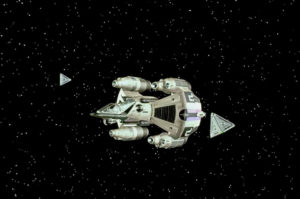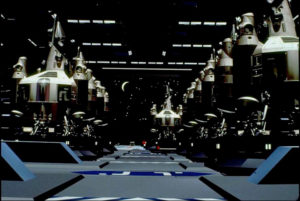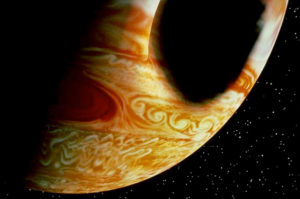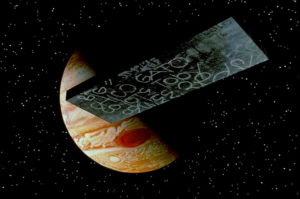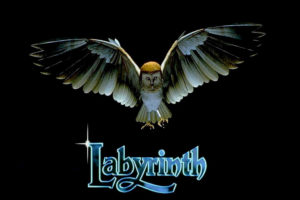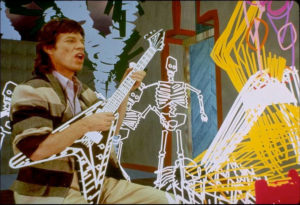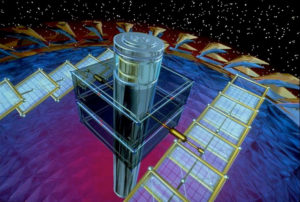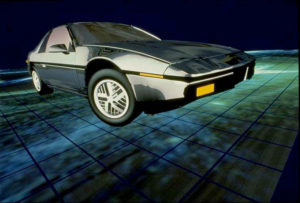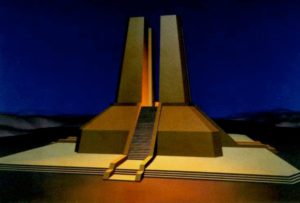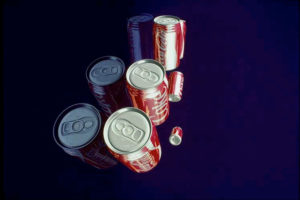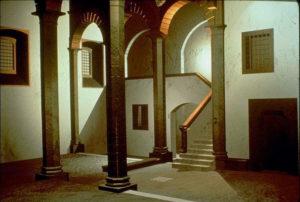Chapter 6: Commercial Companies
6.4 Digital Productions (DP)

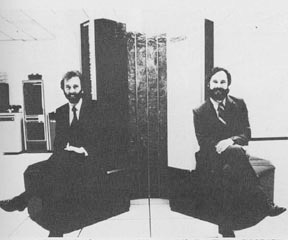
Digital Productions was started by John Whitney, Jr. and Gary Demos in 1981, after they left Triple-I because of a disagreement over the amount of computing power that needed to be devoted to feature film production, particularly for the movie TRON. DP was financed by Control Data Corporation, and the Cray 1S was leased from Ramtek, the frame buffer company.
Their ultimate goal was to emphasize “high scene complexity and computational efficiency” with a focus on “large scale simulated special effects production”, particularly for the motion picture industry. Key employees in the company were Elsa Granville (HR), Larry Yaeger (VP of Software), Craig Upson, Steve Williams, David Ruhoff, Jim Rygiel, Brad Degraf (Head of Production), Producers Nancy St. John and Sherry McKenna, Jim Rapley, Art Durinski, and others. At their peak, DP employed between 75 and 100 employees, and executed special effects for a number of films and advertisements.
Although the Cray provided DP with the computing power that Whitney/Demos desired, it was at a great price… one trade publication indicated that in addition to the cost of the lease, it required approximately $12,000 per month for electricity, and approximately $50,000 in maintenance. Many in the industry claimed that this kind of expense could not be justified by the kinds of contracts that existed in the effects industry at the time, but Whitney and Demos persisted.
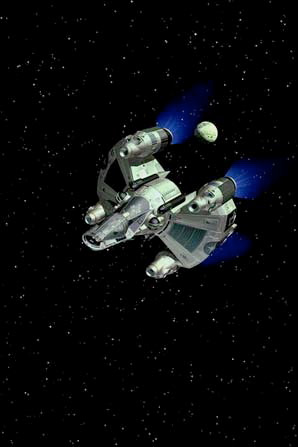
Some of the more notable projects include 250 scenes and 27 minutes of CGI for summer 1984’s The Last Starfighter (which cost $14M – DP’s contract was for $4.5M – and grossed only $21M), Mick Jagger’s Hard Woman music video, Labyrinth, and the Jupiter sequence for 2010, the sequel to 2001. DP also worked on some fairly famous and notable ads and TV promotions, including AT&T (with designer Saul Bass), Pontiac, Mercedes-Benz, the Chevrolet Astro Van, and STP. Brad DeGraf created a connection for “Waldo” (from a sci-fi book by Robert Heinlein in the 40s), the digital puppet used by Henson Productions, to integrate motion activities in a real time sense (some argue that this was the birth of motion capture). Keeping the Digital Scene Simulation process developed at Triple-I, they expanded the software to take advantage of the supercomputer architecture.

Equipment included E&S Picture Systems used for modeling, IMI vector graphics displays for defining and pre-visualizing the animation, and the Ramtek framebuffers used for raster display. Images were calculated and filmed at 2000×2560, and were recorded on the modified PFR at speeds that could reach 12 seconds per image, due to a fast interface to the Cray (note: the Cray 1S was replaced by the Cray XMP in 1983.). Some excess Cray cycles were sold to companies such as General Motors and Ford Motor for their own use.
In late 1984 or early 1985, the expenses of running the company, including the high cost of running the Cray, resulted in the need to discontinue the lease on the Cray, and DP was forced to purchase it outright for $17M. Later in 1985, CDC and Ramtek were both suffering financial woes, and they began to look for ways to get out of the movie making business.
In June of 1986, they agreed to terms, and DP was bought in a hostile takeover by Omnibus Computer Graphics from Canada. Whitney and Demos sued Ramtek for part of the sale proceeds, and were subsequently locked out of their offices in July and a counter suit was filed alleging that W/D started a competing company (Whitney/Demos Productions) and hired away employees. Omnibus changed the Digital Scene Simulation concept to Omnibus Simulation. They also took over Able and Associates that year, and the entire venture fell apart in 1987. (See the discussion in the Omnibus coverage below.)
Whitney/Demos Productions
Demos and Whitney, Jr. started Whitney/Demos Productions after the Omnibus takeover in 1986. They built the company around the Thinking Machine CM-2 and Symbolics workstations. Programming was done in LISP. One of the premiere pieces that was produced was the movie Stanley and Stella: Breaking the Ice , produced with Craig Reynolds of Symbolics, Philippe Bergeron and others. Key employees included Karl Sims, Karol Brandt, Michael Whitney, Mary Ann Morris, David Ruhoff and others. They also had a T.V contract for promotional material for CBS. In 1988 Whitney reorganized the company into USAnimation and Demos founded DemoGraFX.
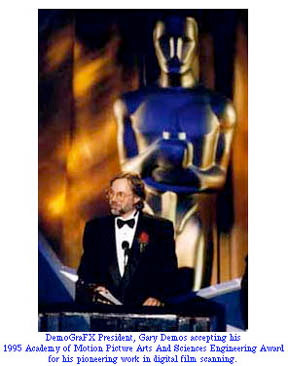
In 1985, Gary Demos received his first Scientific and Engineering Award by the Academy for Motion Pictures Arts and Sciences (with John Whitney, Jr.) for the practical simulation of motion picture photography by means of computer-generated images (1984 work). In 1995, Demos was awarded his second Scientific and Engineering Award (with Dan Cameron, David DiFrancesco, Gary Starkweather and Scott Squires) for his groundbreaking work in the field of film input scanning. In 1996, the Academy honored him with a Technical Achievement Award (with David Ruhoff, Dan Cameron and Michelle Feraud) for efforts in the creation of the Digital Productions Digital Film Compositing System (the famed DFP). In 2006, Demos was awarded the Gordon E. Sawyer Award, “presented to an individual in the motion picture industry whose technological contributions have brought credit to the industry.”
From the DP page of the People Behind the Pixels: History of Computer Graphics website:
“DP’s first major computer graphic project was for The Last Starfighter, $4.5 million worth of state-of-the-art high resolution CG animation. Beginning in Oct 83, Digital Productions traded in the ‘older’ Cray-1S for the very first Cray X-MP supercomputer.
The Cray was fronted by a VAX 11/780 and was used to produce nearly 300 shots totaling 25 minutes of screen time. The team used E&S PS400’s for modeling and IMI vector motion systems for motion preview with Ramtek frame buffers for display. When Triple-I had wrapped the TRON work and decided not to continue in the CG film business, DP leased the Digital Film Printer (DFP) and hooked it up to on of the high speed channels of the Cray. The Cray driven DFP could scan 35mm film at four seconds a frame, and film out the 2000×2560 rendered images at twelve seconds a frame.
For the first time, highly detailed computer generated images were integrated with live action as realistic scene elements, rather than as monitor graphics or deliberately ‘CG’ looking images. Gary Demos from the very beginning always had the drive to only produce the highest resolution, highest quality imagery possible. Kevin Rafferty(ILM) led the team that digitally encoded (modeled) many of the forms designed for the film by Ron Cobb. The technique used was to have top, front and side views of the model drawn orthographically on blueprint-like paper. A mouse/cursor (or puck) with cross hairs would then be used to input the lines of the drawing, one point at a time. Details even included little 3D digital stunt actors inside the Gunstar cockpit.”
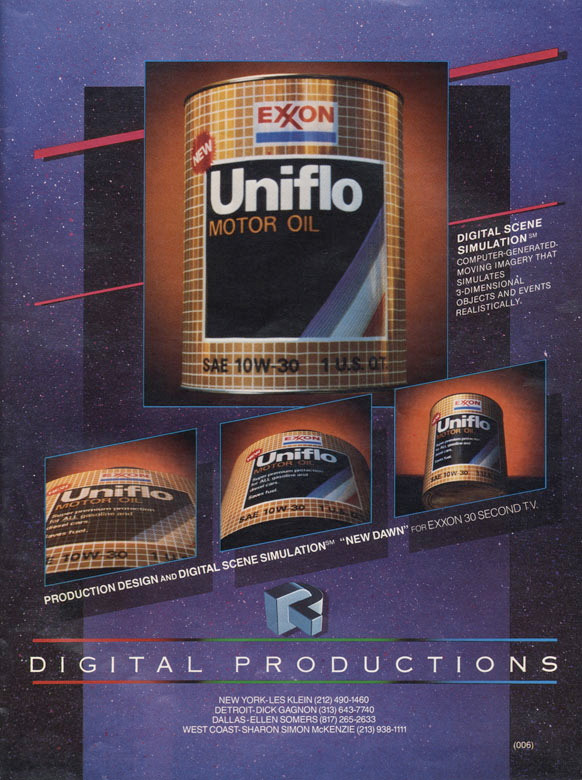
Gallery 6.2 Digital Productions Image Collection
- X-wing fighter from The Last Starfighter
- Scene from The Last Starfighter
- Scene from the Jupiter sequence from the movie 2010
- Scene from the Jupiter sequence from the movie 2010
- Scene from Labyrinth
- Scene from Hard Woman music video
- Scene from Pontiac commercial
- Scene from Dodge commercial
- Cray Temple, Digital Productions
- Texture mask tests
